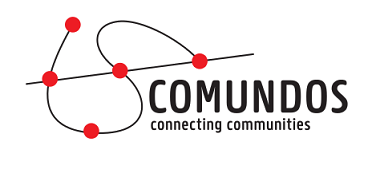SDG6: Water and sanitation
“Ensure access to water and sanitation for all”.
At end of this lesson, students will be able to:
- Understand what SDG6 advocates for in terms of both water and sanitation;
- Understand the importance of drinkable water, water services, hygiene and sanitation;
- Report findings of different items and lessons learned through the activity of Dollar Streets;
- Explain the message and lesson learned from a digital story on SDG6 they chose and the reasons why they picked it.
Brainstorming session through the suggested questions:
- Imagine waking up in the morning and not being able to drink water, take a shower or brush your teeth. What would you do?
- Now, imagine someone ends up in a healthcare facility (ie a hospital) for a night (or more) for a health emergency and there are no basic water services. What would the doctors, nurses and patients do?
- How important is it to have access to water to wash our hands in health care facilities? And elsewhere?
- Can you drink water from the tap in your home?
- Is drinkable water a common good or has it been fully privatized (you can only buy it) in your country? What is the situation in other countries?
- Do you know how to transform dirty water into drinkable water?
- About 71% of the Earth's surface is water-covered. Yet water is becoming scarce. Why do you think this is happening?
- What could water scarcity lead to? What can you do in your daily life to save water?
- Where do you go when you need to pee or defecate?
- Why do you think toilets matter, especially for girls and women?
Possible adaptations: (Online)This activity can be done with the use of online tools (ieJamboard; Miro, Mentimeter).
SDG 6 focuses on ensuring the availability and sustainable management of water and sanitation for all. It addresses a range of issues related to water resources, water quality, sanitation, and hygiene. The primary targets and objectives of SDG 6 are as follows:
This Instructional video SDG6 gives a first insight into what SDG6 advocates for.
Dollar Street 1 helps with visualizing the difference between water source facilities and sanitation within families worldwide based on income. By moving the house icons on the bar and stretching the gap, students can “visit” families around the world and learn about their toilets , water outlets , dishwashing soaps , drinking water , carrying water , and washing hands .
Make groups and assign one item to each to each group. Let your students reflect on the topic.
- What are their initial thoughts?
- Which countries made them an impression, and why?
- How do they differ from their country's facilities?
- How equal is access to clean water and sanitation facilities around the world?
- Is it the same for everyone?
- Which are the countries with less access to clean water?
1 Note for teachers: More information about Dollar Street can be found here .
Students watch the three videos first. Afterward, they pick one video and explain:
- Why did you select that specific video
- What did you learn from it?
- What is the overall message that the author wants to send?
- An Untold Story about drought and 'El Niño' (Philippines)
- Solar Disinfection (SODIS) in Acohof (Cameroon)
- A Healthy Life Depends on Clean Water!!! (Brazil)
Possible adaptation: Use the peel-the-fruit thinking routine to deepen the understanding of the stories, by following these slides . This is preferably a whole class activity.
For SDG6 (water and sanitation) sheet, our favorite pedagogical twist is:
Apply collaborative/cooperative learning (CL): Divide the students into small groups (maximum 4 students). Give students the questions (brainstorming session) that they will ask each other. Finally, they report their findings on paper and each group reports their findings.
To ensure effectiveness, it is important to compose groups according to the activity and other criteria (eg common interests, mixed academic abilities, friendship, etc.) and ensure students share roles, responsibilities and outcomes ownership (Department of Education and Training, 2019) .
If you have another pedagogical twist in mind, feel free to apply or check the pedagogical twist list.
Resources to link to Activity 1 (brainstorming sessions)
- Why It Matters (SDG6) gives insights on thintogoal and actions we can take to help achieve it.
- Why toilets matter is an article by the UN explaining the importance of such tools for our health and hygiene. Moreover, it focuses on hygiene and sanitation for women and girls during their periods.
- SDG 6- UN is the official website providing information on the topic as well as key facts and figures and the SDG6 targets.
- Bill Gates talks toilets and Bill Gates Is Backing The Waterless Toilet Of The Future explain the issue of lack of sanitation in some countries and a new waterless toilet that can be helpful in communities where water is scarce.
Additional inspiring material:
Een gift voor Comundos
Comundos ondersteunt al jaren afgelegen gemeenschappen in de wereld door kritisch denken, mediageletterdheid en het gebruik van communicatietechnologie te onderwijzen. Om dit effectief te kunnen doen, hebben we uw steun nodig voor computers, vertalingen, cursussen en beheer van sociale media.
Bij voorbaat dank!
Comundos - Crelan bank
BE11 1030 2973 8248





